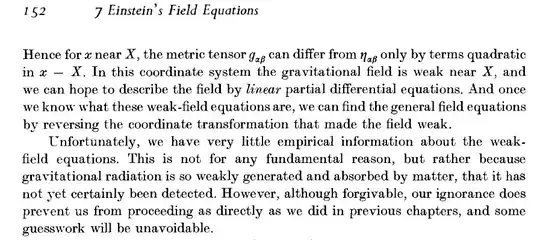We all know that GR needs modification at the microscopic scale but there are some attempts to modify GR in the classical regime as well, known by the name of "Modified Gravity". As far as I understand, these attempts can be possibly justified in the classical mode of thinking for the reason that there is some amount of guess-work involved in deriving the Einstein field equations. Thus, one might want to try out another internally consistent guess and get a modified classical theory of gravity.
Now, according to Weinberg's book Gravitation and Cosmology (Page 152), the reason for the guess-work involved in determining the Einstein field equations is because we need to apply the Equivalence Principle (or the Principle of General Covariance) on the behavior of the gravitational fields themselves if we want to determine the field equations. In order to do so, we go to a frame in which the field is extremely feeble and if we know how the field behaves in such a frame, we will transform the equations to a general frame and we will have the general form of field equations. But, sadly, we don't have enough information about the behavior of extremely feeble gravitational fields apriori. We only have Newton's law which holds for the static kind of feeble fields but not for generic (but yet feeble) fields. This is the reason why we first need to guess what would be the equations governing the feeble fields and then we generalize them by performing a general coordinate transformation. Now, this guess-work can be eliminated and the classical theory of gravity can be described without any indeterminacy whatsoever (or so it appears to me) if we know the (special) relativistically covariant law that governs generic feeble fields.
This excites me to ask whether we have gathered enough experimental data about the feeble fields via studying the feeble gravitational waves at the LIGO. If such is the case then we can determine the classical theory of gravity with cent percent certainty. It goes without saying that such a step will put an end to the possibility of a debate over whether there is dark matter or not. So, my question is, do we have any possibility of gathering enough experimental data about the feeble fields via studying the feeble gravitational waves at the LIGO?
I feel that it might be of a general interest to directly read what Weinberg has said in the context of whether the field equations for the strong fields can be easily determined using a general coordinate transformation if we know the truly precise covariant equations determining the weak fields.
